COOPERATION MODEL
ARTIFICIAL INTELLIGENCE
PRODUCT ENGINEERING
DevOps & Cloud
LOW-CODE/NO-CODE DEVELOPMENT
INDUSTRY
FRONTEND DEVELOPMENT
CLOUD DEVELOPMENT
MOBILE APP DEVELOPMENT
LOW CODE/ NO CODE DEVELOPMENT
EMERGING TECHNOLOGIES







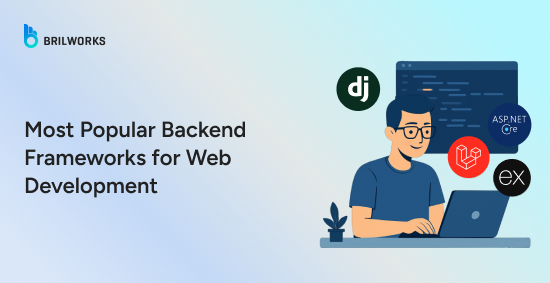
In software, the tools you pick matter as much as the code you write. Frameworks have become central to how apps are built today. Whether it's frontend or backend, not using them means you're investing time in reinventing the wheel. Most frameworks are crafted to bring order to the process and help developers avoid wasting time on basic attributes.
So, whether you're choosing one for yourself or mulling over a new option for your team to improve productivity, it's worth understanding how each of the widely used frameworks really works.
We've been building software for close to ten years now, working with all kinds of frameworks and tools to ship reliable, fast apps. While putting this together, we checked in with different teams on what tools have been working well for them. This article covers some of the most commonly used backend tools.
Popular doesn't always mean best, but understanding why they're widely used can help make sense of the options out there.
We've also included notes from other sources to round out the list.
Why are there so many out there?
The answer should not be that much tricky because every project has different needs. You can't expect one tool to work for everything. Each framework comes out of some limitations developers have faced with others. One solves a certain problem really well but then falls short in other areas. So, while one part of development feels easier, another might become more difficult. That's why no single framework does everything perfectly.
A backend framework gives developers a structured setup to improve their development experience and speed up server-side work. It usually comes with built-in tools and an array of backend libraries that make things easier than starting from scratch.
Some frameworks are opinionated, pushing developers toward certain patterns and best practices, while others are unopinionated, offering more flexibility. Beyond smoother back end development, one of the major benefits is that they help in writing clean, maintainable code and cut down on manual work.

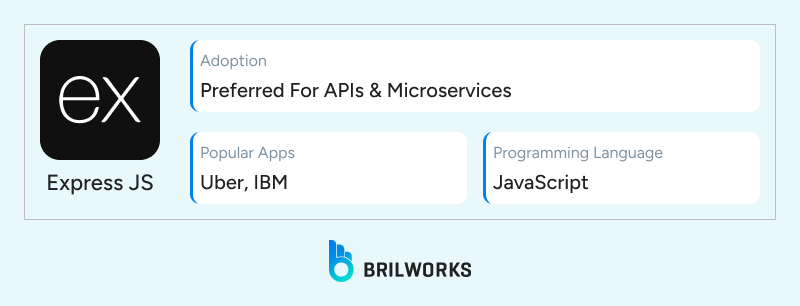
The most popular Node.js framework, Express, is a minimalist and unopinionated framework. While Node.js brought JavaScript to the backend, it lacked routing, middleware, and error handling.
Express.js (or Express), as a core member of the popular MEAN and MERN stacks, provides an efficient routing system, middleware, and route handlers, making API endpoint development and HTTP method handling easy. For simple and medium-scale applications, it cuts development time nearly in half compared to writing everything from scratch in Node.js. Furthermore, it integrates with third-party plugins and modules.
Primary features of Express:
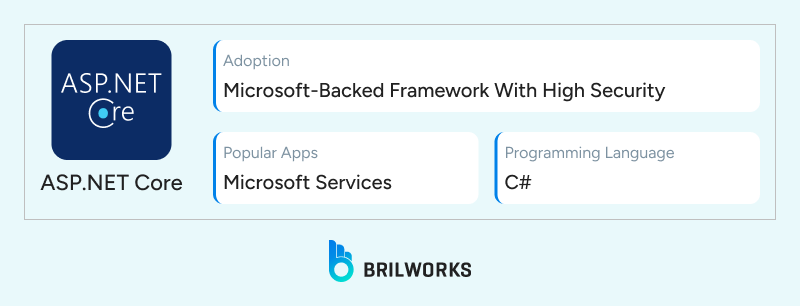
It is an open-source web framework developed by Microsoft. It extends the capabilities of .NET, a developer platform used by millions of developers across the globe. ASP.NET is regarded as the industry benchmark for .NET application development.
The framework includes a large number of packages and libraries, and smoothly integrates with Azure cloud services. Its Blazor and Razor enable the creation of web pages using C# inside an HTML/JavaScript file. Plus, it includes dependency injection and extensible output caching and provides support for WebSockets and SignalR. In addition, it combines MVC and Web API, enabling efficient development of web apps and API.
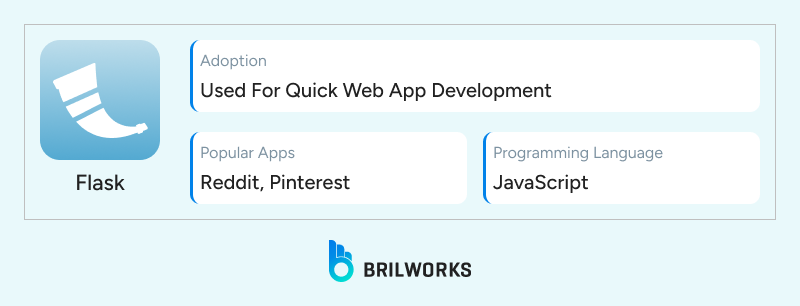
It is a Python-based, lightweight web application development framework. Flask is a very common choice among small and medium-sized projects due to its minimalistic nature. It is an excellent choice for RESTful API development. It utilizes the WSGI external library to pass requests and interact with web servers.
Flask's minimalism and simplicity make it one of the most loved frameworks for back-end development. It supports modular programming, which means you split functions into reusable components. In addition, Jinja 2 remains its default templating engine, which Django also uses, one of the most popular templating engines in 2025.
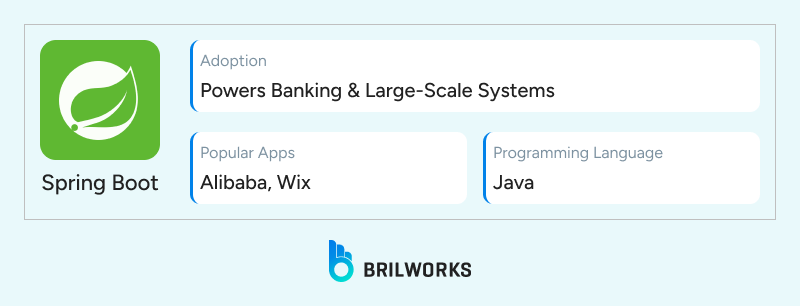
Used by tech giants Netflix and Alibaba to build a reliable backend, Spring Boot is a favorite choice of professional developers for production-grade, standalone applications. This opinionated framework comes up with embedded servers, which means developers can run servers without additional setup. It is the leading choice for enterprise application development with Java.
It extends the capabilities of the popular Java framework -- Spring. Spring has a special feature for modular development, ideal for microservices. It provides a dependency injection feature where objects create their dependencies, and the Spring container injects them at runtime.
Spring Boot adds to the Spring framework, reducing the effort to configure and deploy Spring apps by offering built-in autoconfiguration capabilities.
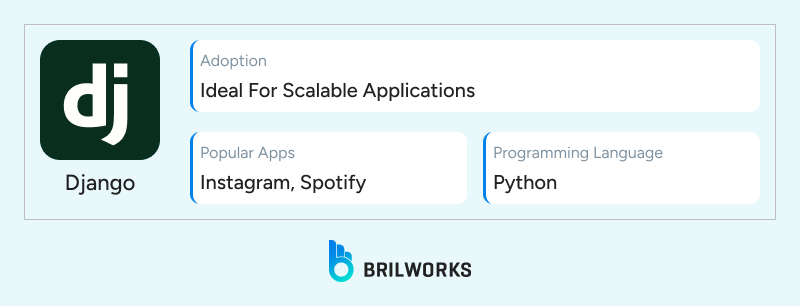
Django is an open-source Python-based framework known for its clean and pragmatic design. It's one of the most popular frameworks in the Python ecosystem, offering features like a built-in ORM, an admin panel, strong documentation, and a simple development experience that makes it widely favored among backend web developers.
It also comes with an extensive standard library, so developers don't need to rely on third-party tools for essentials like debugging, profiling, and testing. Key features include URL routing, form handling, and a robust authentication system, all built-in and ready to use.
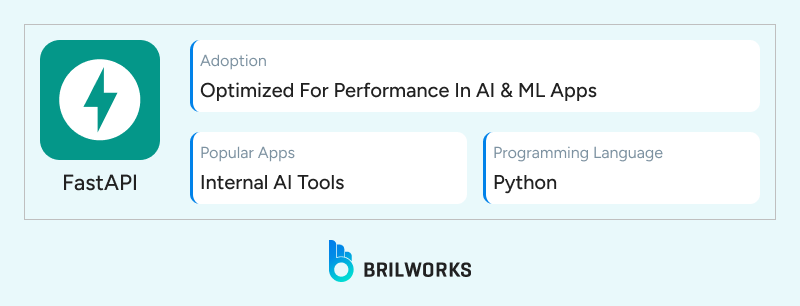
FastAPI is quietly changing how ML engineers put models into production. And the numbers back it.
73% are moving away from Flask or planning to move to FastAPI. The adoption, which increased from 6.02% to 9.9% between 2021 and 2024, surged rapidly year by year. Relatively new, in fact, it was the most loved framework in 2023-2024. (Source: Stack Overflow Developer Survey 2024)
So, what's driving the shift? With native ASGI support, automatic OpenAPI docs, and high-speed execution, FastAPI is winning favor in AI-heavy environments. When performance and development speed matter, it delivers.
This isn't hypothetical, Netflix, Uber, and others are already seeing the benefits. While Django still leads in popularity, it can be heavy for beginners. FastAPI, on the other hand, is gaining fast.
What makes it stand out? It's built on Starlette and Pydantic, making it both fast and reliable. Features like built-in data validation, dependency injection, security tools, and auto docs come standard, no extra setup needed.
FastAPI feels lightweight but scales well, which is why it's becoming a go-to for modern backend development.
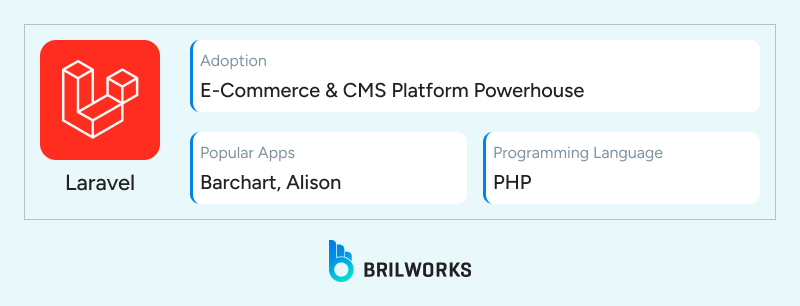
Laravel's Artisan CLI can generate an entire CRUD (Create, Read, Update, Delete) setup with a single command? It saves developers hours by scaffolding models, controllers, and migrations all in one go. Developed in 2011, it is a defacto standard for PHP programers.
This open source is praised for its clean syntax and built-in tools, allowing developers to develop more with less. It is used in both small-scale projects and large-scale enterprise development.
Laravel holds a 35% market share for enterprise projects in PHP-based development.
It features MVC, a timeless classic architecture that separates different layers of an application, promoting maintainability.
This is so popular that almost all major frameworks used for building microservices, API-first design, and serverless systems include this architecture.
As far as features are concerned, Blade template engine is something special, it supports inheritance, reusable components, and conditional rendering. It also includes Object-Relational Mapping (ORM) tools, which are popular for simplifying database interaction. Routing system, built-in authentication, Artisan CLI, notification services, and testing frameworks are its key features.
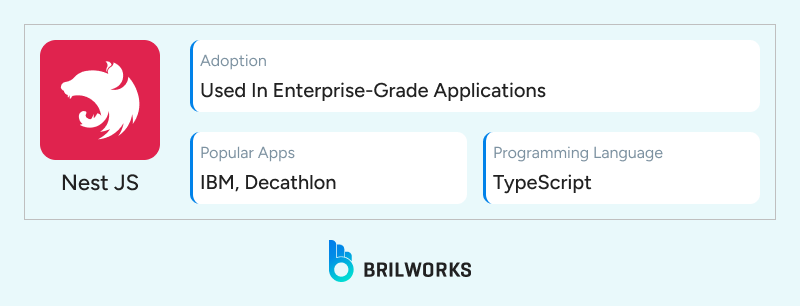
NestJS is a progressive framework. With these kinds of frameworks, you can start development with a minimal setup and incrementally expand with new features. It means you don't need a massive setup to begin development.
Though it's part of the JavaScript ecosystem, NestJS is a TypeScript-first framework built on top of the Node.js runtime. It leverages asynchronous and event-driven features to build web applications. NestJS is popularly used for microservices, monoliths, REST APIs, GraphQL apps, websites, CRON jobs, and CLIs.
Since it adopts TypeScript, it encourages developers to write error-free code from the start. While it's less flexible compared to vanilla JavaScript, TypeScript is increasingly popular due to its strict-typed nature.
Built on top of Express, NestJS offers out-of-the-box APIs. And if you've already used Express or Angular, you'll find it easy to get started with NestJS.
If you're missing dependency injection in Express, NestJS provides it. Additionally, many developers switch between Express and Fastify when working within the Node.js ecosystem.
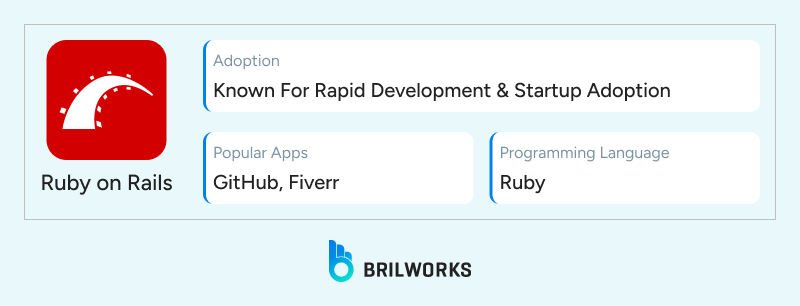
Did you know that Ruby on Rails played a major role in shaping modern web development? It popularized two of the most influential principles, Convention over Configuration (CoC) and Don't Repeat Yourself (DRY). These ideas didn't just stay within Rails, they influenced dozens of modern frameworks that came after.
As of 2025, over 626,000 live websites are powered by Ruby on Rails, and more than 3.6 million have used it historically.
Startups continue to prefer Rails because it helps ship faster without needing a huge team or setup. Companies like GitHub, Shopify, Airbnb, and Basecamp have relied on Rails for their backend since early days, and continue to do so.
Ruby on Rails, or RoR, is a server-side web framework built with Ruby. It follows the Model-View-Controller (MVC) architecture, giving developers a clean way to separate concerns and maintain code over time. With its elegant syntax and built-in tools, it allows for rapid development without compromising structure.
One of the most pouplar features is that it can auto-generate models to controllers and views, saving hours of work. The built-in Active Record ORM simplifies database interaction with clear and readable syntax. You also get a robust routing system, built-in security against common vulnerabilities, and tools for testing and background jobs, all out of the box.
Its Convention over Configuration approach means developers don't waste time setting things up, they just build. And DRY helps keep the codebase clean by avoiding repetition. Together, they make Rails not only fast to build with but also easier to maintain in the long run.
Rails continues to be one of the most developer-friendly frameworks, especially for startups that need to move quickly. And even though it's been around for almost two decades, its strong community and modern tooling still make it relevant today.
If you're building something simple, starting from scratch or using low-code/no-code tools might work. But when you're aiming for a modern, scalable product, the toughest part is often choosing the right tools that allow fast, standard-based development.
The frameworks listed here are among the most loved and widely used for backend development. They help developers from diverse backgrounds build secure, modern web apps and APIs with solid architecture.
Newer frameworks address many limitations found in older ones. That said, battle-tested tools like Django and Ruby on Rails, built nearly two decades ago, are still widely trusted and used in modern projects. Their longevity proves they're capable of supporting complex, reliable applications.
While newer frameworks offer cleaner syntax and modern features, some developers might find their ecosystem or lack of flexibility limiting. Still, these tools form the backbone of today's backend development.
And if you're unsure which framework fits your goals, whether you're working with legacy systems, want to avoid switching languages, or need access to a broader developer pool, our team at Brilworks offers free consultations for startups. We help you choose the right tech stack to build robust, long-lasting systems that scale with your business.
Get In Touch
Contact us for your software development requirements
Get In Touch
Contact us for your software development requirements